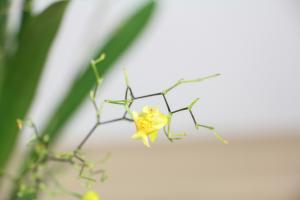What is the Process that Produces Water Vapor from Plants?
Plants play a vital role in our ecosystem by converting carbon dioxide into oxygen and providing food for humans and animals. Plants also release water vapor into the atmosphere through a process known as transpiration. In this article, we will explore the process that produces water vapor from plants.
What is Transpiration?
Transpiration is the process by which plants release water vapor into the atmosphere. It occurs when water is absorbed by plant roots and transported to the leaves where it is released through small openings called stomata. Plants transpire water to maintain their temperature, cool themselves down and to provide the necessary hydration for photosynthesis.
The Role of Stomata in Transpiration
Stomata are small openings on the surface of leaves that regulate gas exchange between the plant and the atmosphere. They allow carbon dioxide to enter the plant and oxygen to exit, but they also play a crucial role in transpiration. Water vapor exits the plant through the stomata, which are surrounded by guard cells that adjust the size of the opening to regulate the rate of transpiration, depending on the plant's needs and environmental conditions.
The Importance of Environmental Factors in Transpiration
The rate of transpiration in plants is greatly influenced by environmental factors such as temperature, humidity, light intensity and wind. Temperature, for instance, can greatly affect the rate of transpiration as it speeds up the process of evaporation of water from the plant's surface. High humidity levels, on the other hand, can slow down transpiration as the air already contains a high amount of water, making it difficult for more water to evaporate. Light intensity can also affect transpiration as it influences the process of photosynthesis, which in turn affects the stomata opening and closing. Wind can increase the rate of transpiration by removing the layer of saturated air from around the leaf surface, creating a drier environment.
The Water Cycle and Transpiration
Transpiration is an essential component of the water cycle, which describes the continuous movement of water on, above and below the surface of the Earth. The water cycle begins with the sun's energy, which causes evaporation of water from oceans, rivers and other bodies of water. The water vapor rises into the atmosphere and eventually condenses into clouds, which then precipitate as rain, snow, or hail. Some of this water is taken up by plants, which eventually transpire it back into the atmosphere. The water that does not evaporate or transpire becomes groundwater or is absorbed by plant roots and used for photosynthesis.
Conclusion
Transpiration is an important process for plants and the environment. It supports photosynthesis, cools down plants, and contributes to the water cycle. Understanding the process of transpiration and the factors that influence it can help us to better manage our natural resources and ensure the health and sustainability of our planet.

 how many times do yo...
how many times do yo... how many planted tre...
how many planted tre... how many pine trees ...
how many pine trees ... how many pecan trees...
how many pecan trees... how many plants comp...
how many plants comp... how many plants can ...
how many plants can ... how many plants and ...
how many plants and ... how many pepper plan...
how many pepper plan...































